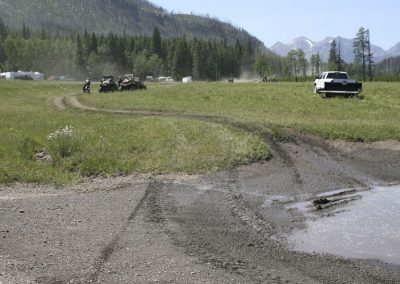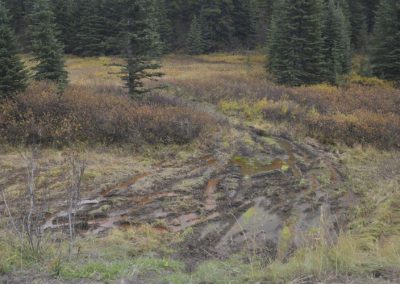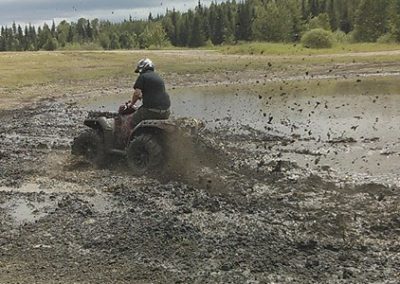Since 1989, the Castle-Crown Wilderness Coalition has advocated the provincial government for the sustained protection and management of the Castle Wilderness.
 Reasons for protecting the Castle
Reasons for protecting the Castle
The provincial government has outlined the main reasons to protect the Castle Wilderness:
“Protecting the Castle is critically important for the biodiversity and water quality of this entire region. Under Parks’ legislation, and with the input of all Albertans, we will permanently protect this special place for future generations to enjoy as we transition the land to support good local jobs in tourism and recreation.”
Shannon Phillips, Minister of Environment and Parks
Government of Alberta media release – September 2015
“Covering nearly 104,000 hectares, the Castle area is an ecologically-diverse expanse of mountains, foothills, forests, grasslands, rivers and lakes in southwestern Alberta. It is prized for its headwaters, biodiversity and functions as a key wildlife corridor. The Castle is culturally significant to First Nations, and forms part of the Crown of the Continent – the mountainous region where Alberta, British Columbia and Montana meet.”
Government of Alberta media release – September 2015
Management Principles for the Castle
CCWC submitted to the Government of Alberta in March 2016 management principles for the Castle Wildland and Provincial Parks. These principles are centred around recognizing the significant ecological value of the Castle Wilderness.
Off-highway vehicles
 As a threat to Castle ecosystems and water security, off-highway vehicles (OHV) should not be allowed in Castle Wildland Park and Castle Provincial Park. Over 90% of the linear human disturbances in the Castle parks have been the result of OHV trails. The disturbances are a concern for grizzly bear habitat and native fish populations, and a recent proliferation of OHV activity in the Castle has increased soil compaction, habitat fragmentation, sediment runoff into streams and the proliferation of invasive species.
As a threat to Castle ecosystems and water security, off-highway vehicles (OHV) should not be allowed in Castle Wildland Park and Castle Provincial Park. Over 90% of the linear human disturbances in the Castle parks have been the result of OHV trails. The disturbances are a concern for grizzly bear habitat and native fish populations, and a recent proliferation of OHV activity in the Castle has increased soil compaction, habitat fragmentation, sediment runoff into streams and the proliferation of invasive species.
There is overwhelming provincial support for preserving wilderness areas, which contribute to improved water and air quality. A 2015 survey by the Praxis group found 95% of Albertans agree wilderness is important because it helps to preserve plant and animal species, and 92% of Albertans support wilderness areas.
At the local level, southern Albertans support protecting the Castle watershed and wildlife habitat. In a 2011 study in Lethbridge, 94% of respondents supported protecting the Castle while less than 6% supported recreational opportunities.
- Castle Area Forest Land Use Zone: Linear Disturbances, Access Densities and Grizzly Bear Habitat Security Areas (2011)
- Environmental Effects of Off-Highway Vehicles on Bureau of Land Management Lands: A Literature Synthesis, Annotated Bibliographies, Extensive Bibliographies and Internet Resources (2007)
Activities compatible with the long-term protection of the Castle
 Sensitive use of the Castle this special area. These activities are compatible with protection of the Castle:
Sensitive use of the Castle this special area. These activities are compatible with protection of the Castle:
- Equestrian use
- Guiding and outfitting
- Nature study and wildlife viewing
- Cross-country skiing and snowshoeing
- Adventure tourism, except for high-impact activities
- Primitive camping, but motorized random camping needs to be managed
- Livestock grazing, with careful management to protect native plant species and wildlife food sources
 Eliminating the following activities ensures the Castle’s ecosystems and recreation are sustained:
Eliminating the following activities ensures the Castle’s ecosystems and recreation are sustained:
- Off-highway vehicles
- Limit roads and trails to minimize linear disturbances
- Hunting
- Oil and gas exploration and development
- Logging
- Industrial and commercial developments
 All activities require consistent monitoring and enforcement, and special consideration for:
All activities require consistent monitoring and enforcement, and special consideration for:
- Aboriginal places, their cultural use and history
- Transition areas along the park boundaries
- Gateway community development outside of the park will benefit local economies and eliminate the need for highway-side development within the park
Read the complete proposed Management Principles prepared by the CCWC.








